Energy Matters
n Balancing act: Modernising the network involves big challenges

n Extending the life of first-generation wind turbines
n Can vertical farms plus renewable energy equal quality, low-cost food and a better environment?
n Jamie Farndale: Getting the message on sustainability over the line
ISSUE 26 | SUMMEr 2023
By Mike Reid Head of Energy
Negotiating energy transition in a time of change requires expert support
Some of the biggest advances in the UK are taking place not in medical labs or electronic workshops but in the countryside
Many involve the transition from a fossil fuel-driven economy to a lowcarbon one, aimed at halting climate change
So when landowners respond to a developer ’s approach about a wind farm opportunity (pp6 and 8), they’re concerned not only with boosting income, but protecting their rural business and assets as well as limiting greenhouse gas emissions And when farmers invest in peatland restoration (p7), they can also boost renewable energy production, through improved water flow, while at the same time protecting the environment
We are seeing a continued rise in enquiries about, and preparatory activity in, all land-based renewable-energy technologies, including solar PV (pp13 and 26), battery storage (p10) and, while the technology remains at an early stage, green hydrogen generation (p14) As the energy transition gathers pace, some projects, with the right backing, will take off on a major scale, benefiting landowners, local communities and the fight against climate change
Property owners have an inherent responsibility, to themselves, their families and also to the wider community to maximise the environmental and economic benefits of this activity
Some developers are well established and will have seen many owners jump at what at first appear
8
Bangernomics: Like some old cars, wind farms with a history can yield super performance but you need to get the balance right.
to be attractive agreements
However, alongside the financial benefits there are many potential pitfalls in signing up to terms without proper consideration and advice Instead of acting hastily it would be wise for owners to carefully consider their long-term objectives as well as the proposed scheme – and seek specialist property advice The benefits are demonstrable Most developers will agree to pay a landowner ’s reasonable legal and surveyor's fees for obtaining advice about a renewable scheme
Similar considerations apply both in negotiating with telecom companies over phone masts and related equipment (p12), where the legal and regulatory landscape is subject to frequent change, as well as in seeking compensation due to the impacts of large infrastructure projects such as road (p9) and rail (p15) upgrades So, get advice –we’re here to help
Also in this issue, we look (p4) at efforts being made to ensure Britain’s crucial electricity transmission and distribution network can cope with the energy transition and what might be done differently
We also explore (p11) the rise of carbon offsets and the risks of creating a conscience-salving ‘greenwash’ economic system Instead, most of us are taking up to the urgent need to tackle energy and environment challenges at their roots

13
Sunny outlook: Solar is taking off in Scotland but success depends on negotiating a mutually beneficial deal
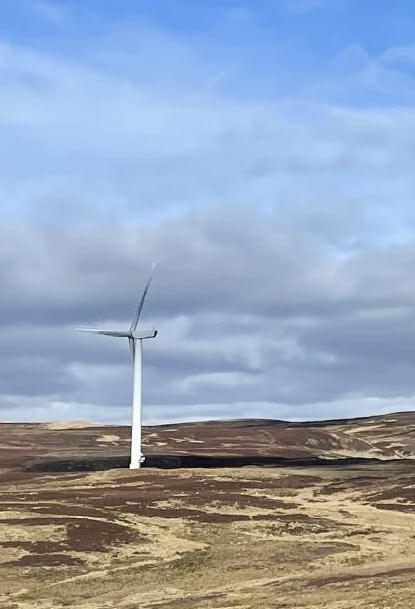
24
New faces: Seven new staff as Galbraith expands in England’s North-East
11
22
Off to a T: New style pylons start their march across the country
Junk carbon: Facilitating the validation of noncredible carbon credits negatively impacts global progress towards achieving net-zero emissions
19
Farming future: A long-awaited update on the future of agricultural support in Scotland has been unveiled
Knock knock: What should landowners do when a renewable energy or battery storage developer makes a rental offer?

Pag e 2 | Energy Matters | Summer 2023 | galbraithgroup.com
WELCOME
CONTENTS
Energy M at te r s i s p ro d u ce d by Allerton Communications, Marlborough, Wiltshire, a n d d e sig n e d by G e o r g e G ray M e d i a & D e s i g n, Saint-A n d e ux , Fra n ce © C K D G a l b ra ith L L P Mike
Reid
10
6
Comparing offers: A tender process can be an ideal way to get maximum benefit from an onshore wind development.
20
Trying harde Jamie Farnd challenge of Scottish Rug more carbon neutral and sustainable organisation

14
Going green: The transforation of a former coal-fired power station is making progress.
9
Uncertain road: A further delay to the A9 upgrade brings more concerns for landowners
7
Peat power: Improving hydropower efficiency and production is one among many benefits for peatland restoration
12
Legal precedent: Case law is influencing the setting of rent levels for phone masts and related equipment
16
14
Waste not How green hydrogen can make the most of spare wind power


26
Solar solutions: An imperfect site need not impede useful solar PV generation.
Growing up: Could vertical farms powered by renewable energy be the future for quality, low-cost food and a better environment?
23
Net gains: Broadband without the wires
15
Right lines: Rail electrification continues apace in Scotland
24
Energy bonus: As energy bills soar, eco homes command premium prices 27 Renewable energy subsidies
4
Balancing act: Aligning renewable electricity generation and distribution is a major challenge we must resolve quickly


18
Sustainable living: The zero carbon house that doesn’t cost the earth
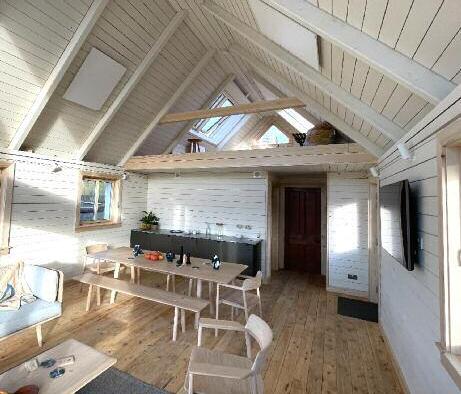
galbraithgroup.com | Energy Matters | Summer 2023 | Pag e 3
Balancing act: The struggle to align renewable electricity generation and distribution
In our last issue we looked at the importance of energy storage and grid connections in bringing a sustainable future
Modernising the network involves big challenges
Mike Reid considers some possible solutions
Replacing fossil fuel-generated electricity with clean, green power is essential if the UK is to fulfil its commitment to net zero greenhouse gas emissions by 2050 (in Scotland it’s 2045).

While 40% of the UK's electricity last year came from solar, wind, biomass and hydropower, investment in clean energy needs to accelerate in order to address the risks of climate change
Despite this progress, several factors have prompted some developers to reconsider their commitment to the UK market
renewable energy and battery storage site developers warn that delays of up to 13 years to connect to Britain’s energy grid threaten investment and undermine the shift from fossil fuels Wind turbine manufacturers fear rising costs and supply chain disruption could jeopardise the energy transition
At the heart of these problems lies the UK’s decades-old infrastructure Our mid-20thcentury electricity system was designed to carry electrons from generating plants powered by coal, gas and nuclear to concentrated populations, mostly in the south, as well as to remoter parts
Making connections remaking the network for a modern, green economy requires huge investment For example, connecting some wind farms, normally located to benefit from the maximum wind resource, is likely to be costly, time-consuming and difficult as typically they’re located in areas with little or no infrastructure, lacking capacity to transport electricity to the grid
On top of that are the planning and regulatory approvals required Additional complexity dates from the time of industry privatisation, which
introduced multiple regions and separate entities for generation, transmission and distribution
Add to this the challenge of an ongoing, decades-long, green revolution, characterised by constant innovation, where novel technologies must be tested and proven before wider adoption, and decision makers must assess the relative merits of, say, batteries, hydro and hydrogen storage
It’s of little comfort that countries around the world face similar problems
The issue is being addressed partly by a system called balancing, whereby grid operators buy the electricity required to match supply to demand in real time Yet despite participation by several suppliers, rising demand means achieving equilibrium is becoming harder by the year
National Grid ESO, the grid company charged with balancing electricity, has produced a five-point plan to address the growing backlog, but it remains a short-term solution
Wider reform is required to address the burgeoning demand for grid applications from a diverse range of generation and storage projects, all driven by the need to decarbonise
Rethinking distribution
Perhaps the biggest driver in the energy revolution has been the shift in generating from central UK locations to Scotland, which is windy and less populous than the south and so favoured by wind developers, and its surrounding seas –even windier, with no people
Intermittency, however, means that at times of very high wind, the grid pays on- and offshore generators to close down turbines to prevent
Pa g e 4 | Energy Matters | Summer 2023 | g a l b ra i t h g ro u p co m
system overload To replace this wasted carbonfree power and avert blackouts, gas generators nearer to towns and cities are switched on – at considerable expense both financially and in carbon emissions
Longer-term storage is the most obvious way to retain that energy for use as required, and the market is developing a wide range of competing and complementary solutions, based on battery, pumped hydro, hydrogen and other technologies
As to the North-South distribution divide, we could buy and install enough cabling from Scotland to the South-East to satisfy electricity demand – but that would be too slow and too costly for our ambitious decarbonisation targets
A more economical, practical solution would be to generate green energy nearer the population centres where it is consumed – but history shows that local objections would thwart this outcome
And in England, the Government is accused of doing nothing to reverse its ban on new offshore wind farms
The North-South problem stems from omitting from price calculations the cost of transporting electricity up and down the country, a problem highlighted in Energy Matters issue 20 (p23) But there are alternatives

Reform is unavoidable
One way would be to divide the market into areas and allow prices to develop independently in each zone This ‘locational pricing’, used in the US, Canada and New Zealand, would compel suppliers and consumers to consider where electricity is coming from and going to
This would lower prices in the North where power is generated and raise them in the South where demand is high Suppliers might even be inclined to brave NIMBYs and build more generation in the South-East, while energy-intensive industries could gravitate North, creating more jobs and wealth

National Grid ESO believes the plan could deliver radical restructuring within five years, lowering household electricity prices and reducing network operating costs while helping decarbonise the system
Not everyone agrees, and there are risks associated with such disruptive changes However, in order greatly to reduce carbon emissions by generating greener electricity, we need to connect renewable energy generation and storage to the grid, faster and more economically To achieve this, network reform is essential, an the sooner we start, the better
mike reid@galbraithgroup com
07909 978642
g a l b ra i t h g ro u p . co m | Energy Matters | Summer 2023 | Pa g e 5
“
Not all windfarms are located as conveniently close to the grid as this one
Perhaps
the biggest driver in the energy revolution has been the shift in generating from central UK locations to Scotland
Onshore wind: How private tendering gets good results

The people of Scotland are no strangers to wind power For centuries this natural resource has been harnessed to power mills and ships Larger scale onshore wind development was previously incentivised by the renewable Obligation subsidy scheme but this has now ended and the majority of development is now subsidy free other than those that apply for Contracts for Difference
When landowners are approached about an onshore wind farm opportunity the rental payments often appear very attractive compared to current land uses, but wind farm option and lease agreements also place significant restrictions on land use and these must be fully understood before any project progresses

Landowners can often receive an approach from more than one developer and it is often difficult to compare the offers as there will be different rental levels, review provisions, decommissioning commitments and a variety of other terms
Organising a private tender is a successful way of landowners being able to maximise the opportunity and compare offers on a more consistent basis We often coordinate private wind farm tenders for landowners with
companies who we know will be successful in developing a wind farm opportunity
It is important to give developers adequate time to carry out due diligence as part of the tender process, to allow them to assess the scale of the possible development We also consider it is a critical part of any tender process that there is an interview with the short-listed developers, so the parties can meet each other and make sure their objectives align for the way they will develop the scheme, taking into account the current and future land use policy of the landowner
The developers are asked to tender on a comparative basis so their offers can be properly assessed on a like-for-like basis and they are also asked to clarify their approach to some site specific issues, such as the impact on existing farming operations and subsidy schemes, protection within the lease over planning obligations, decommissioning bonds and responsibility for reasonable professional fees
We have seen this tendering process result in successful partnerships between landowner and developer to progress onshore wind farm developments Usually the costs of the tender process are covered by the successful developer It is important for anyone approached about a potential wind farm development to obtain proper specialist professional advice Whereas private negotiations for wind farms are commonplace, there is also scope for the tender process to assis project development
mike reid@galbraithgroup com
07909 978642
Pa g e 6 | Energy Matters | Summer 2023 | g a l b ra i t h g ro u p co m
A tender process is often the ideal way to secure maximum benefit from an onshore wind development, says Mike Reid
The hidden power of peatland
Improving hydropower efficiency and production is one among many benefits for peatland restoration
Rachel Urquhart and Edward Fletcher report


The numerous benefits of peatland restoration are increasingly well known – enhanced carbon storage, water quality, flood management and biodiversity
But there a number of other advantages for the rural economy that are less obvious
A growing number of these projects are being undertaken throughout Scotland with funding from NatureScot’s Peatland Action grant scheme and the Peatland Code, allowing restoration schemes to generate carbon credits that can be used to raise funding through private finance Many are in upland areas, particularly the Highlands, where blanket peat bogs form a prominent part of the landscape These areas often feature steep topography and high annual rainfall, making them well suited to run-of-river and impoundment (dam-based) hydro schemes that can generate important income for landbased businesses These schemes play an important role in electricity generation, particularly complementing other modes and providing grid back-up
A key factor affecting the MW output of a run-ofriver hydro scheme is flow rate through the turbines This can be improved through peatland restoration, owing to the increased surface roughness and capacity to retain water associated with blocked drains and revegetated surfaces that feature throughout restored peatlands This means that following high rainfall, peak discharge during storms is reduced as water takes longer to run off peatland into surrounding catchments
In addition, a higher base flow is maintained during periods of drought as water is retained in
the peatland These two factors mean that MW output is more consistent throughout the year, with reduced seasonal variations between wet and dry spells
One estate in the Highlands started restoring its degrading peatlands, some lying near an existing hydro scheme, more than five years ago This has increased efficiency by more than 15%, comparing MW output to pre-restoration levels

restoration improves the quality of low-pH watercourses found in degraded peatlands by increasing alkalinity, another benefit for hydro schemes It also reduces the volume of eroding peat in the washout This can reduce the cleaning associated with intake screen clogging, boosting output and lowering maintenance costs
For rural businesses with hydro schemes and peatlands, restoration of peatlands can improve the output capacity of hydro schemes while delivering a wide range of climate and ecosystem benefits
We at Galbraith are developing several restoration projects across Scotland under Peatland Action and the Peatland Code, combining our GIS and natural capital expertise with on-the-ground knowledge of land management to deliver peatland restoration for our clients
07990 130753
galbraithgroup.com | Energy Matters | Summer 2023 | Pag e 7
edward fletcher@galbraithgroup com
rachel urquhart@galbraithgroup com
07785 462790
Extending the life of first-generation wind turbines
Like some old cars, wind farms with a history can yield super performance but, says Richard Higgins, you need to get the balance right
In the motoring world the concept of Bangernomics is decades old – you can run an older car more cheaply and suffer less depreciation over time, while accepting the risk of more repair costs tipping the balance Are wind turbines any different?
Many of the wind farms developed in the early 2000s will be at an important part of their lifetimes and there are opportunities for operators and landowners alike to discuss the best route forward

Typically leases for these assets will have the capacity to be extended for a specified period of time to enable continued operation of the turbines, but on expiry of the initial lease term, is this the best route forward for the landowner?
After 20 or 25 years of sustained performance, turbines will be showing signs of age and be operating beyond their intended design life Their energy generation and efficiency will be reduced
and the operation and maintenance costs will be climbing
However, for the wind farm operator, profitability may be at its highest, assuming the turbines are producing Debt will have been paid off and lease terms likely to be advantageous in comparison to more recent market agreements Eking out a few more years from an aging stock may make sense for them, but what of the landowner?
Given that most of the earlier developments are located at the better wind sites, have established planning consents and grid connections, repowering (or effective redevelopment) may mean better returns for both the landowner in
Pa g e 8 | Energy Matters | Summer 2023 | g a l b ra i t h g ro u p co m
After 20 or 25 years of sustained performance, turbines will be showing signs of age and be operating beyond their intended design life.
“
terms of improved lease terms and variable rental payments from more efficient turbines harvesting a greater wind yield; and also for the developer largely for the same reasons
However, redevelopment comes at a price, involving fewer but more expensive, larger turbines whose price will be covered over a number of years This depresses the real return to the developer in the early years, but leads to improved net return in the longer term
Quite where the “sweet spot” lies depends on a wide range of factors, including lease terms, planning, potential to extend installed capacity and of course the continued operation of installed assets
From an environmental perspective, repowering comes at a cost, with the scrappage of turbines (embedded carbon) that could continue to generate (albeit less efficiently) for a period, plus replacement with new turbines and infrastructure
It is important to understand the economics when making decisions to extend a lease or to push for an earlier re-power

As ever, the devil is in the detail and the best outcome will emerge from sensible, informed and timely discussion between the parties
Scotland’s road to uncertainty

A further delay to the A9 upgrade brings more concerns for landowners Philippa Orr reports
Transport Scotland’s £3 billion A9 dualling scheme was designed to deliver economic benefits of about £210 million a year through improved road safety and reliable and quicker journey times, as well as better links to pedestrian, cycling and public transport facilities
Construction work to dual 80 miles of single carriageway between Perth and Inverness began in 2015 and in December 2021, the Scottish Ministers confirmed a commitment to upgrade the road by 2025, but in February this year, the Scottish Minister for Transport, Jenny Gilruth, announced that the scheme has been delayed indefinitely due to the Covid pandemic, Brexit and the war in Ukraine
This announcement came after it was confirmed that only one firm tendered for the Tomatin to Moy section and this submission was much higher than budgeted This part of the road will need to be retendered once contract terms and conditions have been altered to better reflect the risks of a very uncertain and challenging construction market Transport Scotland hopes to award a contract before the end of this year This is disappointing as it’s a failure by the Scottish Government to deliver a manifesto pledge from 2007 Apart from causing delays for road users, the A9 is one of Scotland’s most dangerous roads, with 13 deaths in 2022, making it the deadliest year on the road since 2001
It is not just the roadworks that are giving a headache to drivers and locals but also the Compulsory Purchase Order (CPO) process Galbraith has been acting on behalf of many

landowners and clients along the route, advising on the process, submitting ground investigation claims and attending meetings with Transport Scotland to provide comment on draft orders
Our clients range from large estates with thousands of acres to small landowners who own a couple of fields regardless of the amount of land a client has, anyone with land or interest in land has a right to claim compensation The amount will vary depending on the value of the land as well as the projected loss caused by giving up possession Every landowner along the A9 is impacted, but the smaller landowners can feel the hardest done-by as they will lose a greater percentage of their land
Transport Scotland first made contact with many of our client in 2015 to start discussions about the CPO process Since then the prospect of land being taken has been a prominent aspect of planning and decision
making for the land and residential properties
Some people feel there has been so much upheaval due to the dualling project that they would like to sell their land and properties to move elsewhere, but they are concerned by the depreciation of their house
There looks to be no immediate end in sight for the A9 dualling project, and we at Galbraith continue to do what we can to help landowners in the ongoing work and the CPO process 07917 220779

galbraithgroup.com | Energy Matters | Summer 2023 | Pag e 9
orr@galbraithgroup
philippa
com
richard
com 07717 581741
higgins@galbraithgroup
What should landowners do when a renewable energy or battery storage developer makes a rental offer?

Philippa Orr reports

When developers come knocking
Renewables will play a key part of reaching the UK’s 2019 commitment to reach net zero greenhouse gas emissions by 2050, alongside nuclear, carbon capture and storage and improvements in energy efficiency
Demand for land for renewable energy projects, particularly solar and battery, has reached unprecedented levels in the past year and shows no sign of slowing
This had led to a big increase in developers looking to secure land for projects despite current barriers to planning permissions and problems with the national electricity grid renewable developments offer large financial benefits for landowners and our initial guidance would always be for landowners to seek further advice on possible taxation and succession issues that may arise from any such approach
We at Galbraith are regularly in discussions with existing and new clients about developers expressing an interest in their land to secure option and lease agreements to build renewable energy and battery projects Some are hearing from a number of parties interested in the same area
Developers are known to canvas an area through either sending out letters or door-knocking with draft heads of terms or exclusivity agreements – some can be quite assertive about signing up there and then
Although the commercial terms initially
offered might look appealing, landowners should always seek an agent’s advice to make sure the heads of terms offer suitable protection for the longevity of the project More often than not an agent can increase the commercial terms by negotiation The first version proffered by a developer will benefit them by allowing maximum flexibility with the land at low cost
involved, the more the cost of capital has decreased and the more people and companies are able to get involved
Sometimes a developer ’s undeclared intention is to get the option and lease, grid connection and planning permission in place, then sell the project to another company to build and operate Landowners should consider if they’ll be speaking to the same company 20 years down the line And what if the initial firm becomes insolvent and/or is acquired?
When Galbraith is negotiating heads of terms, we make sure to include an alienation clause, which allows the developer to assign the benefit of the option and/or lease to a wholly owned group company or a special purchase vehicle (SPV), subject to the landowner ’s written consent
An assignation payment will be made should the option and/or lease be assigned We do not like allowing a developer to be able to sublet the property during the lease period other than by a sub-lease for the electricity substation to the distribution network operator (DNO) This clause covers our clients should they enter into an option and lease with a developer who intends selling the project to be operated by a third party
We are seeing more and more new renewable development companies emerging, all wanting to get involved in the solar and battery boom Falling costs is the biggest factor in this increase Since 2010, the cost of solar photovoltaic electricity has fallen by 85% because the more renewable technologies are deployed, the cheaper they become due to economies of scale and competitive supply chains
The more financiers become familiar with the technical and project risks
Most developers will agree to pay a landowner ’s reasonable legal and surveyor's fees for negotiating heads of terms and preparing the option and lease We would therefore recommend that a landowner does not sign an agreement without first seeking advice rom surveyors, solicitors and accountants
Pag e 10 | Energy Matters | Summer 2023 | galbraithgroup.com
07917 220779 philippa orr@galbraithgroup com
“
Landowners should always seek an agent ’s advice to make sure the heads of terms offer suitable protection for the longevity of the project.
The rise of non-credible carbon offsets
Facilitating the validation of junk carbon credits negatively impacts global progress towards achieving net-zero emissions
James Lighton reports
A number of high-profile consumer-facing companies such as airlines, banks and utilities are making highly questionable claims of achieving carbon neutrality.
An analysis conducted by Bloomberg Green (2022) found that significant quantities of renewable-energy offsets were being cheaply purchased by companies
Whilst renewable energy is certainly vital in the transition from fossil fuels, the falling cost of renewables means they rarely need additional finance to be economically viable This means they fail one of the key tests of a credible carbon offset: ‘additionality’
The issue of junk carbon credits stems from a globally unregulated voluntary carbon offset trading market that financially incentivises the purchase of non-credible carbon credits in order to make a bogus net-zero claim
Whilst high-integrity verification registries such as Verra and Gold Standard are beginning to exclude gridconnected renewable projects, new bodies such as the Global Carbon Council in Qatar have been founded with the intention of validating renewable-energy credits
Facilitating the validation of non-credible carbon credits negatively impacts global progress towards achieving net-zero emissions
Since voluntary carbon offsetting is essentially a Pr exercise, the issue of junk carbon credits is perhaps something which should be addressed
by advertising standards regulations to prevent false claims of achieving carbon neutral status

In the UK, recent changes to the Woodland
Carbon Code’s additionality requirements has ensured that economically viable commercial timber plantations cannot yield carbon credits, maintaining the high integrity nature of UK carbon
The risk posed by the growing purchase of noncredible carbon offsets, which have little to no influence on reducing emissions, is that they can throw carbon trading itself into disrepute
This has serious consequences as carbon trading is an important way in which companies can target investment into the easiest wins for tackling climate change
Purchasing ‘junk carbon’ risks damaging a company’s reputation Galbraith can advise you on ensuring your carbon offsets are credible to maintain high-integrity carbon finance
james lighton@galbraithgroup com 07342 093469

galbraithgroup.com | Energy Matters | Summer 2023 | Pag e 11
“
The risk posed by non-credible carbon offsets, which have little to no influence on reducing emissions, is that they can throw carbon trading itself into disrepute.
The complex case of the phone-mast rental
The setting of rent levels for phone masts and related equipment has been influenced by case law
Mike Reid reports
Recent legal rulings on rental levels are sure to affect negotiations between landowners and telecom companies looking to locate phone masts on their property

The Upper Tribunal (Lands Chamber) in England has settled on a process for determining Electronic Communications Code (Code) rental valuations Three recent decisions issued by the Upper Tribunal concerned disputes involving rental values for telecommunication sites under the 2017 Code The relevant cases are:
• EE Limited and Hutchison 3G UK Limited v Affinity Water Limited (Affinity Water case)
• On Tower UK Limited v AP Wireless (UK) Limited (The Audley House case)
• EE Limited and Hutchison 3G UK Limited v David Paul Stephenson and AP Wireless II (UK) Limited (The Pendown Farm case)
The Upper Tribunal in England
and the Scottish Lands Tribunal in Scotland have the power to set Code agreements including determining disputed clauses and the appropriate rental levels Paragraph 24 of the Code confirms the amount of the consideration (rent) payable by an operator under an agreement imposed by the Tribunal “must be the amount or the amounts representing the market value of the relevant person’s agreement to confer or be bound by the code right (as the case may be)”
Historically this has led to comparable evidence being placed before the Tribunal in order to assess the appropriate rental level However, these recent cases have shifted the emphasis away from the comparable method of valuation to a new, more complex, three-stage valuation assessment, as used in the On Tower v Green (Dale Park) case
Stage (1) is to assess the underlying value of the land and then (2) add the value of the additional benefits granted to the tenant, then (3) value the additional burden on the landowner for the grant of the Code agreement The recent cases have produced a table of proposed Code rents under Paragraph 24 (see below)
Telecommunication rents have traditionally been based on a market rental value using the comparable method of valuation so it is unusual to depart from this method of assessment other than for stage one of the three-stage process
Pa g e 12 | Energy Matters | Summer 2023 | g a l b ra i t h g ro u p co m
The Decision Type of Property Annual Rent CTIL v Fotheringham rural, no housing £600 (£1,500 in year of installation) Pendown Farm rural, no housing £750 On Tower v Green (Dale Park) rural, adjacent to housing £1,200 On Tower v AP Wireless (Port Talbot and Huntington) Industrial area/storage yard £2,020 / £2,100 Affinity Water Suburban residential water tower £3,000 CTIL V Marks & Spencer city department stores/offices £3,850 CTIL v London and Quadrant City residential rooftop £5,000 prOpOSEd rENTS uNdEr paragraph 24 Of ThE COdE
The mobile operators are regularly quoting the table of rents when applying for new Code agreements or lease renewals as it is beneficial for them to agree rents at these levels, often implying that there is no option but to agree to their proposed terms
rents are still being agreed generally above these levels and when reviewing any rental decisions, the effect of inflation since that date also needs to be taken into account
Whereas the rental level is an important consideration for any telecoms agreement, there are many other terms of the agreement that are equally important for protecting a landowner ’s future rights

For example, we often find that there are no rent review provisions offered leaving the landowner having the value of their rent eroded by inflation each year and at the end of the term potentially only having the option of a costly Tribunal process in order to update the rent to an appropriate level
It is important to seek specialist advice ahead of telecommunication negotiations in order to protect rights and futureproof agreements
All the landowner ’s reasonable fees, without cap, should be paid by the operators for progressing a Code agreement as the Code should be cost-neutral to landowners
mike reid@galbraithgroup com
07909 978642
As solar PV takes off,
best value?
Solar power is gaining ground in Scotland but, cautions Richard Higgins, success depends on negotiating a mutually beneficial deal


Until recently, solar PV was not seen as an entirely viable proposition for Scotland, lying at higher latitudes
Advances in panel efficiencies and the economics surrounding solar generation have led to a significant increase in interest from developers, investors and speculators
Galbraith has been acting for a number of landowners across Scotland in negotiating heads of terms for option and lease agreements for the purpose of solar farm development
We have completed a number of conditional transactions, and one in particular, just to the northwest of Dundee, highlighted the importance of understanding the wider project beyond the simple rental level which may be achieved from the operator Currently we are seeing rental proposals ranging from £500 to more than £1,000 per acre per year and, while this is an important measure, it is far from the full picture Obtaining variable rents (share of revenue) in addition to a base land rent is critical in ensuring that the landowner obtains best value Typically, developers are looking to obtain a return from their investment over a relatively short period of time to pay back the development costs and then enjoy a period of “super profit” once all of the assets are paid for This is blended across the duration of the lease (typically 30 to 40 years and occasionally longer)
Having an understanding of the financial structure of th project will help in the negotiation of more advan tageous terms for the landowner in achieving a share of the revenue of
the solar farm This is not straightforward, however, as different developers have different approaches, funding models and drivers in the form of investors and what they want to do with the generated power
If there is a local demand for the output, it may be possible to obtain a higher price for the electricity generated than simply exporting to the grid
Similarly, co-locating solar with battery storage can also add to efficiency and enhance revenues
Having clarity and understanding of the wider position is important, particularly when the relationship between landowner and operator will endure for a number of decades
Many grid connection dates are now over eight years into the future and, in these volatile times, building in opportunities to review the rental levels either by way of indexation or by market rent w is essential
07717 581741
galbraithgroup.com | Energy Matters | Summer 2023 | Pag e 13
how do landowners get
“ richard higgins@galbraithgroup com
Typically, developers are looking to obtain a return from their investment over a relatively short period of time to pay back the development costs.
Green hydrogen can make the most of spare wind power
For hydrogen, the future is green Mike Reid reports
Green hydrogen is a clean and sustainable fuel that can be used to generate power and heat. Produced using electrolysis fuelled by renewable sources such as wind, solar and hydro power, it can be used to displace fossil fuels in power generation and heating applications
As a sustainable fuel source, green hydrogen can also be used to store excess energy from renewable sources This is particularly helpful when there is surplus renewable energy generated, as the hydrogen can then be kept and used as required
Due to constraints in the grid, often, when renewable power can be generated, wind farms cannot operate at full capacity as the energy network cannot take the power Wind farms are paid not to generate in situations like this, through so-called constraint payments
According to the renewable Energy Foundation, onshore wind output in Scotland reduced by 20% in 2021 compared to 2020 due to low wind conditions A reduction in power has a significant effect on the volume of wind energy constrained off the system, with a corresponding reduction in the total cost to consumers
However, constraint payments were made for 1,783 GWh of onshore wind in Scotland in 2021 at a cost of £107 million, compared to 3,460 GWh costing £243 million in 2020
In addition to the cost of constraint payments, we are wasting the renewable energy from wind power, and the sooner we can either improve the grid network or find effective economic sustainable storage facilities, the better
As green hydrogen is produced through electrolysis using energy from renewable sources, it’s more expensive than hydrogen made using established technologies, which employ coal or gas, but it is one of the potential solutions for energy storage for surplus renewable energy production as well as being a renewable fuel source As costs come down with technology improvements, green hydrogen production will hopefully provide an effective sustainable fuel in the future for agriculture, haulage, shipping, some public transport and aviation
We are involved in a number of potential hydrogen projects and can see the potential for this technology to become a major source of renewable energy
It is important to obtain specialist professional advice at an early stage of any hydrogen development and th developer will normally pay reasonable fees incurred mike
Transformation of Cockenzie moves ahead

New headway has been made in the transformation of a key generation site

Richard Higgins reports

Further progress has been made in transforming a former coal-fired power station into a key area for economic growth and renewable energy supply. East Lothian Council has completed the sale of seven acres of land at the Cockenzie site east of Edinburgh to Inchcape Offshore Windfarm Limited (ICOL)
The deal completes a very long journey for ICOL, providing the company with certainty to enter the construction phase
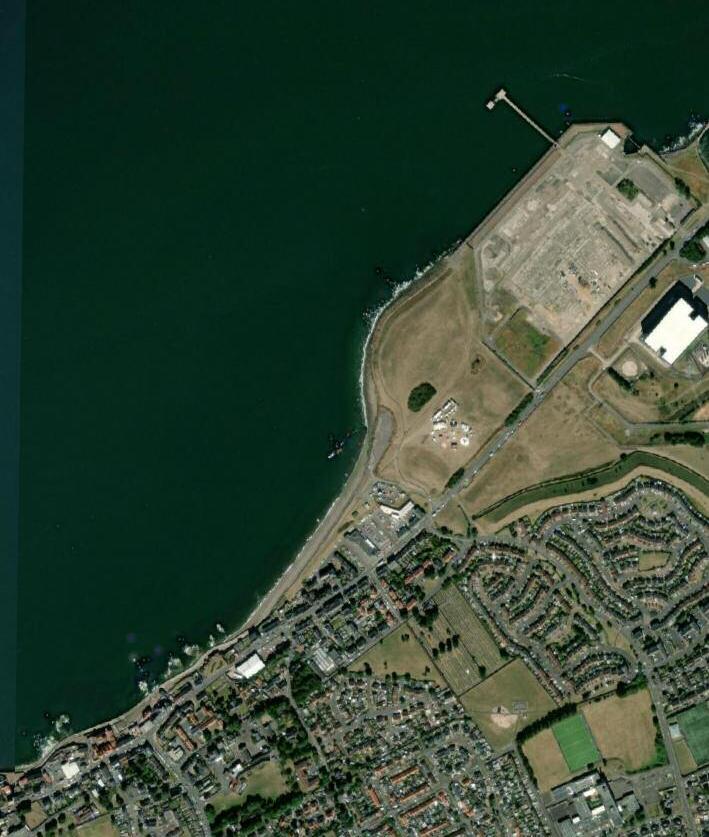
Pag e 14 | Energy Matters | Summer 2023 | galbraithgroup.com
reid@galbraithgroup com
07909 978642
© Crown copyright and database rights (2023) Ordnance Survey Licence No. 01100031673 Galbraith, Lynedoch House 31 Barossa Place, Perth, PH1 5EP Tel: 01738 451111 Email: perth@galbraithgroup.co.uk Page Size: A4 Scale: N
of its offshore windfarm, to be located off the Angus coast
The council acquired the wider land around the former Cockenzie power station in 2018 and Galbraith has provided advice to them on a number of fronts since
In addition to the sale of around seven acres, much is happening in and around the location Discussions are ongoing with Seagreen Wind Energy, to provide an additional substation to serve its offshore windfarm, also off the Angus coast, and there is also potential for large-scale battery storage
A key attraction for the prospective projects is a transmission substation connecting them into the grid – and they address only part of the full potential
In recent months, the council has been successful in attracting levelling-up funding from the UK Government to help to facilitate the opening up of a former coal store and realignment of a railhead
Keeping an eye on railway upgrade


Rail electrification continues apace in Scotland, and, as Rachel Russell reports, landowners should review what this means for them
As the roll-out of the Scottish Government’s rail electrification programme gains momentum, an increasing number of clients are contacting Galbraith for advice following approaches from Network Rail and other delivery partners
The Government’s major investment in Scotland’s railway will partially electrify lines to provide quieter, greener and cleaner trains as part of the plan to decarbonise the passenger railway network by 2035
We looked at the action plan in detail in issue 24, but what could the associated works mean for landowners and land managers?
We are assisting clients with approaches relating to soil sampling, ground investigation surveys, access requests and temporary construction compounds
into the site, providing superb connectivity to both the rail network and also the road network, with the A1 lying in close proximity to the south
Additional infrastructure investment by the council includes a plan to construct a new link road, helping to open up areas for economic use, bypassing Cockenzie and lightening the traffic load through the historic town
These are exciting times and it is pleasing to see a mixture of public and private initiatives creating opportunity for the region and the local communities
The council is currently undertaking a revised master-planning exercise to ensure best use of the land which will broadly provide significant areas of development of some 9 acres

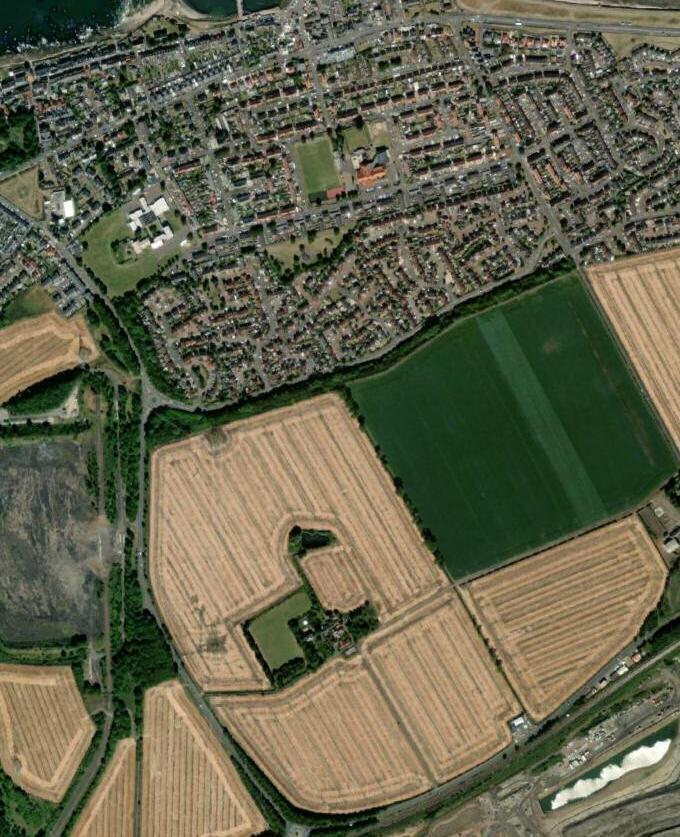
richard higgins@galbraithgroup com
07717 581741
Many traditional bridges are being replaced to ensure increased clearance to accommodate overhead wires, insulators, transformers and masts which, without careful management, could result in access to land being temporarily severed It is important to ensure access rights and land right terms are agreed to protect the land manager ’s position from the outset, with the cost of professional fees being met by Network rail
We will also seek to ensure that you are adequately compensated for any reasonable losses incurred
If you’re either a landowner or occupier who has been approached in relation to railway upgrade works, do get touch


galbraithgroup.com | Energy Matters | Summer 2023 | Pag e 15
rachel russell@galbraithgroup com 07884 657219
going for growth: Is this the future of Scottish agriculture?
Vertical farms powered by renewable energy are the future for quality, low-cost food and a better environment, say the firms behind a major Scottish initiative Philippa Orr reports
Plans are being drawn up for a series of renewable energy-powered, ultra-high-tech farms in Scotland that could change forever the way we grow food
A number of UK companies have linked to build several low-carbon vertical farms using a mix of technologies and have identified sites between Dumbarton and Dundee for the project
They will use soil-free growing techniques and stack crops in specially designed beds and trays, all powered by 100% Scottish renewable energy Low use of water, fertiliser and pesticide will bring environmental benefits, according to Vertical Farms and Storage Technologies (VFAST), the consortium behind the plans
Each site of one hectare (2 47 acres) or more will be housed in a large building and use artificial light and climate control for optimum results,
with the aim of providing fresh, locally produced salads and fruits to more than 60% of the Scottish population The system operates well using sites of lower quality than used for traditional farming
The technology can produce crops unsuited to the Scottish climate which are therefore currently imported It can also extend the growing season and more quickly develop crop breeding or starter plants The UK imports 50% of its food, so vertical farms can boost locally grown produce while potatoes, carrots and barley continue to be grown locally at scale and low cost
Both food and energy producers aim to decarbonise and meet environmental goals VFAST said the plan would help meet the Scottish Government’s ambitions to produce more homegrown fruit and vegetables Initial harvests are likely to include herbs and leafy greens such as basil, rocket, lettuce and chilli peppers
The partner companies hope to identify and build joint projects combining vertical farming, energy generation and a novel pumped energy storage process, developed by the start-up rheEnergise, that uses a fluid 2 5 times denser than water, so it can be installed on small hills instead of mountains and generate power outputs similar to those of much larger hydro schemes
Energy cost is a key barrier to crop diversification in vertical farming and ‘ total controlled environment agriculture’ so the scheme could unlock an even wider range, such as alternative protein
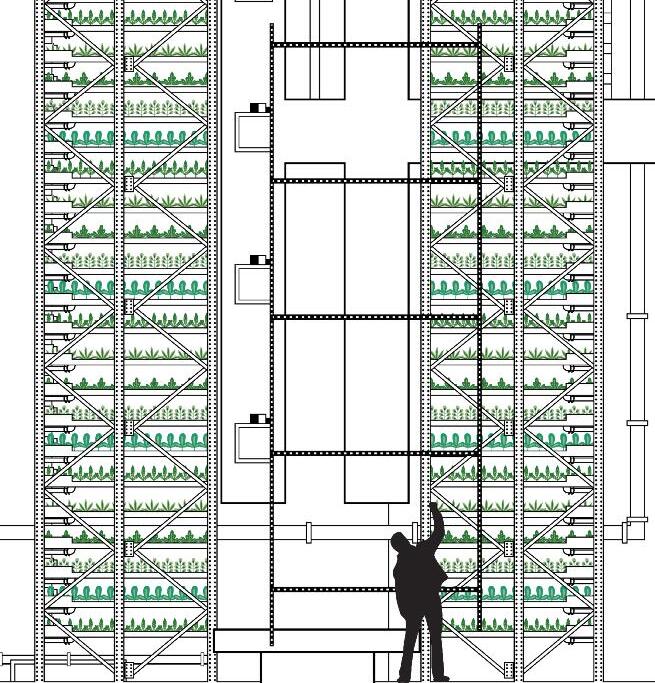
The consortium has identified the line of low hills spanning the Campsies, Ochils and Sidlaws for the projects
The renewable energy project size is variable –from a small unit to power one ‘V-Farm’ to an installation large enough to support a whole town, with vehicle charging and businesses The storage provider can deliver energy to local consumers at a lower than normal cost

Pag e 16 | Energy Matters | Summer 2023 | galbraithgroup.com
Vertical farms stack trays of crops to give around 300sq m of growing space in a 9m tall tower with a footprint of 40 sq m
“Each new vertical farm would provide high quality food at a lower cost than a typical indoor farm drawing energy from the local grid,” V-FAST said
The sites will employ wind and solar generation and energy storage, often in the same area to maximise land use efficiency renewable generation is low-cost but intermittent
To ensure near-constant power, the farms will need a Long Duration Energy Storage (LDES) solution of 8-12 hours – that’s longer than existing battery technologies can economically provide The High Density Hydro storage system developed by rheEnergise will provide the farms with grid stability and reliability


The farms will use the latest innovations to maximise low-cost food production Co-locating storage and a vertical farm means they use the same space and grid connection, with the
growing area occupying upper levels and storage, the lower
V-FAST comprises UK Urban AgriTech (UKUAT), Vertegrow Ltd, Light Science Technologies, rheEnergise, the James Hutton Institute, LettUs Grow, IGS, and Sprung Structures

“Energy and labour are the two biggest operational costs for any vertical farm,” said Graeme Warren, CEO of Vertegrow “V-FAST can reduce the cost of energy and so would go a long way towards enabling vertical farms to offer affordable and competitively priced produce Sustainable and carbon-neutral growing are of key importance when replacing imported crops ” Stephen Crosher, CEO of rheEnergise, added: “renewables plus high-density hydro can not only provide stable low-cost power to the vertical farms, but also extend these very same benefits to consumers, industry and businesses across the entire Scottish central belt ”
Gravity situation: Controlled release of special high-density liquid stored in hilltop tanks will drive generators to power a vertical farm The system can use lower hills than conventional pumped hydro, and this opens up many potential sites of combination with vertical farms.
galbraithgroup.com | Energy Matters | Summer 2023 | Pag e 17
“
Each new vertical farm would provide high quality food at a lower cost than a typical indoor farm drawing energy from the local grid.
07917 220779
philippa orr@galbraithgroup com
The zero carbon house that doesn’t cost the earth

Eleanor Harris steps over the threshold of one architect’s vision for sustainable living

When COP came to Glasgow in November 2021, Peter Smith, an architect and Passivhaus designer, decided it was the perfect opportunity to showcase his zero-carbon, timber-frame house
Peter brought the ‘COP26 House’ to life in time for the UN Climate Change conference by bringing together more than 20 companies from across the home building sector to form Beyond Zero Homes
The house was a culmination of many projects and experiences Peter had had during his career Every detail in the design was considered in terms of environmental and social impact, the performance in use, capacity for re-use of materials at end of life, and affordability rather than carbon-intensive concrete and steel, the COP26 House was built mainly using locally sourced timber and natural materials All the wood products from the main supplier BSW Timber were grown in Britain and FSC-certified after the Forest Stewardship Council Local sourcing meant carbon emissions from transport were also reduced
In a further effort to save a hefty carbon footprint, the originally planned corrugated metal roof was replaced with a timber boarding roof, a type commonly used in Scandinavia
“My route to working in sustainable architecture actually started at the age of 10, with a visit to the Centre for Alternative Technology (CAT) in Wales,” said Peter, who works at roderick James Architects (rJA) “Living sustainably, carefully considering every individual’s impact on the world, has been ingrained in my thinking from then ”
From a full lifecycle analysis, it was calculated that the house incorporated ‘embodied’ carbon –the amount emitted during construction – of 515 kg/m2/year, a 22% reduction on the 2030 target of the royal Institute of British Architects Up to the completion stage, the house is actually a carbon store – using approximately 24 tonnes of CO2 in construction but storing 53 tonnes of sequestered carbon in its structure But the house didn’t address only embodied
carbon: minimising operational energy was also central to the design Whilst not aiming to achieve the full Passivhaus standard, the same design principles apply
That means the house is extremely airtight (0 6 ACH), using triple glazed windows and doors (1 0 W/m2K U-value), high levels of insulation (walls/floor/roof 0 12W/m2K U-values) and mechanical heat recovery ventilation As a result, the amount of energy required to heat the space – via infrared panels – is around 25% of the average for a typical new house of this size, built to current UK building regulations, at 25 kWh/m2/year
In the short time since the COP26 house’s design and construction, there has been a significant increase in extreme climate events, energy prices have soared, and the value of locally sourced materials has become more widely recognised This simple but beautifully designed, energyefficient house, made from ecologically responsible, low-carbon materials, is more relevant than ever before: an affordable and healthy home that literally doesn’t cost the earth
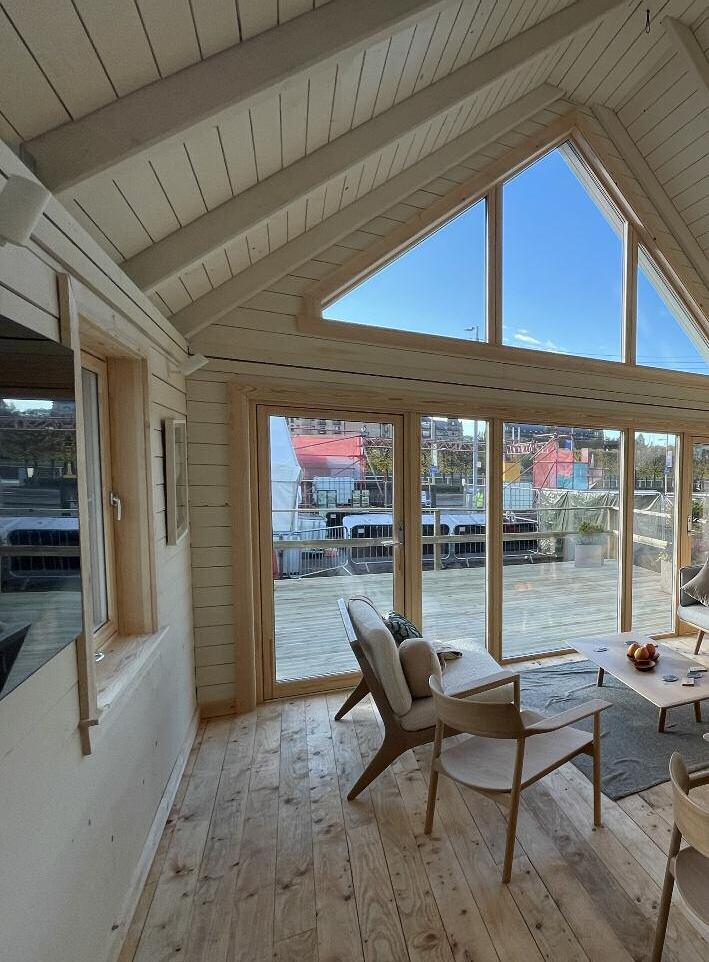
w roderickjamesarchitects com Pag e 18 | Energy Matters | Summer 2023 | galbraithgroup.com eleanor harris@galbraithgroup com 07585 900870
Agriculture support beyond 2025
A new route map for Scottish agricultural reform has been unveiled, providing a long-awaited update on the future of agricultural support in Scotland, reports Rachel Russell

In February, the Scottish Government published a detailed Agricultural Reform Route Map and draft list of measures for its new Agriculture Reform Programme (ARP).
The ArP sets out proposed changes to the way Holyrood allocates agricultural funding with significant changes afoot
Moving away from the existing three-region model, at least half of all funding for farming and crofting will be targeted towards outcomes for biodiversity gain and a drive towards low-carbon approaches to improve the resilience, efficiency and profitability of the sector
To deliver its Vision for Agriculture, published in March 2022, the Government has outlined a four-tier model to provide support to farmers, crofters and land managers that will help to achieve:
• High-quality food production and sustainable production chains;
• reduced greenhouse gas emissions from the agriculture sector;
• A substantial regeneration in biodiversity, ecosystem and soil health; and
• 'Just transition’ – creating thriving rural and island communities
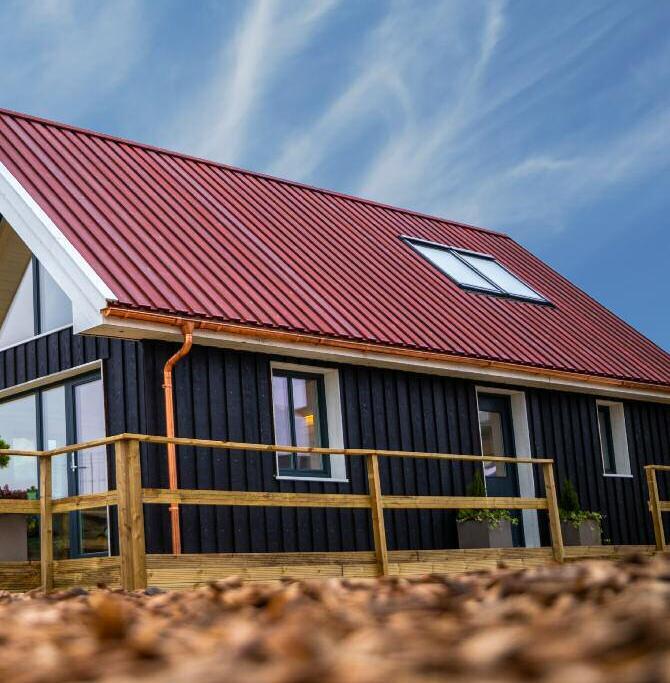
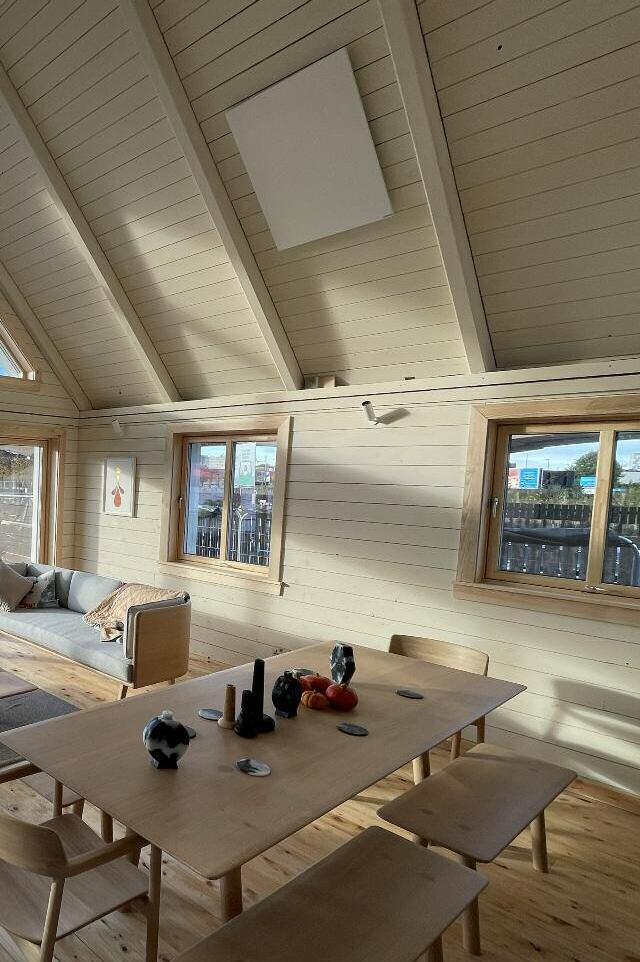
The tiers set out base payments, enhanced measures, elective funding and complementary continuous professional development for eligible claimants A phased transition is proposed, with the introduction of the new conditionality on the existing Basic Payment Scheme (BPS) from 2025
With proposed packages including continuous soil cover, efficient/reduced use of synthetic inputs, crop diversity and measures to restore and manage existing nature rich habitats, it is apparent that the Scottish Government is seeking to implement a support framework that delivers high-quality food production, with a focus on climate mitigation and adaptation, and nature restoration
We await an indication of the level of support which will be attached to each tier However, we at Galbraith are on hand to guide claimants through the transition to the ArP as further information is made ailable
galbraithgroup.com | Energy Matters | Summer 2023 | Pag e 19 g a l b ra i t h g ro u p . co m 2023 Pa g
rachel
657219
russell@galbraithgroup com 07884
“
The Government has outlined a four-tier model to provide support to farmers, crofters and land managers.
Jamie Farndale needs no introduction to Scottish rugby fans
For more than a decade the former Edinburgh winger has travelled the globe captaining his country on both the world sevens circuit and at the Commonwealth Games He is currently training with Team GB with sights set on becoming an Olympian in Paris next year

Off the field he’s preparing for his biggest tackle yet As Scottish Rugby’s Sustainability Ambassador, Jamie is tasked with creating a more carbon neutral and sustainable organisation, while also using his platform to deliver behavioural change on a larger scale
Callum Kerr of Galbraith –Official Property Consultancy Partners of Edinburgh Rugby – caught up with Jamie to talk all things sustainability, academic studies and beating England at Twickenham
Jamie farndale: Getting the message on sustainability over the line
Callum Kerr: When did you first get involved in rugby?
Jamie Farndale At school I never played minis or youth rugby was played at the Edinburgh Academy where I was schooled and I got involved there I wasn’t as good as everyone else but I loved it and wanted to get better at it
CK: Was there a moment along the way that you realised you could make a career out of it?
JF: Not really – I left school to study law I’d been involved in Edinburgh rugby and age-grade stuff but I was only doing it because I loved it I got offered a twoyear academy contract as an Edinburgh player, so I took it for one year and said to my parents that I wanted to take it as a gap year and go to university after That first year was a whirlwind; I played Scotland U20s at a world cup, ended up top try scorer, then became Edinburgh’s youngest ever debutant at 18 At the end of that year I managed to convince my parents to not go to university and pursue rugby – it probably
took the equivalent of a law degree trying to convince them!
CK: How do you feel Edinburgh rugby has evolved from those early days?
JF: It’s always been a club of really good people The main evolution results-wise has been they’ve learned how to win There’s always been incredibly talented players but there’s been a hard edge come in [Edinburgh coach] Mike Blair has given them purpose It seems he creates space for that real closeness of the players and brings out that drive that’s above winning and losing – a higher purpose
but at the heart there’s always been a great group of guys coming together I have so many great memories and close friendships
CK: Looking at your international career for Scotland and GB Sevens – that’s been the bulk of your playing career and still is – how has that journey been?
JF: I’ve loved it I made my debut at Twickenham, we beat England in the third game of the day which was in front
of 80,000 I just remember thinking this is crazy This is exactly why I play rugby; these moments I’ll cherish for the rest of my life
I barely missed a tournament for about five years but then when Covid struck travelling around the world to 16 countries playing just wasn’t going to happen, so I returned to Edinburgh and played about 15 times that year It came to the end of that Covid season and I had the option to come down and link up with Team GB for the Olympics or stay on with Edinburgh
I realised that sevens was what I loved Travelling around the world getting different experiences and cultures was what I wanted to do, so made the decision to come down to London and I’m enjoying still being involved
CK: Jamie, focusing on what you’re doing off the field, could you tell me what your role with Scottish rugby is and what it entails?
JF: I am the Sustainability Ambassador What it entails is working with their ESG
Pag e 20 | Energy Matters | Summer 2023 | galbraithgroup.com
and taking in everything around you instead of just focusing on shareholder value and profits
CK: How did this role come about for you?
JF: I was studying business management alongside playing, which took me nine years Towards the end of that I did a module on business sustainability strategies and I’ve always been really into nature In Scotland we’re so looking to have this nature around us I decided at that point I wanted to go into a career in business sustainability post-rugby I’m still playing so the two didn’t really meet until I put them
ponsors Sustainability is high on the gendas of all these businesses that vest in sport
he platform sport and athletes have ovides an opportunity to create rgescale change A study from IT[Massachusetts Institute of echnology] showed influence globally 00 years ago influence came from oliticians, writers and poets 100 years go sport first appeared to show fluence but now around 50% of people e influenced by sport In comparison ientists influence 2%
K: What is sport doing right currently?
F: Engaging fans in an authentic way We need to change people’s behaviours ut people don’t listen to faceless ganisations Sportsmen and women ith influence are a better way of onnecting with the public There’s great xamples throughout sport of activism nd athletes using their voice That’s omething to be encouraged in our ourney to a low-carbon economy

CK: What could sport do better?

JF: A more strategic approach would help Sport has moved into the professional space and become a business, but if you peel back those yers it is ultimately about community st and foremost If we can focus more n that than on profits, numbers and ins then we’ll be doing what sport is ctually there to do It is a transition to a ell-being society

here’s good people doing good things ut it often seems to be a one-off If we e able to strategise that plan and find aps on where we can do more then ere’s so much benefit sport can bring the community on facing nvironmental challenges
y dream of the future is creating sports ganisations that give back in more ays than just entertainment - a team at is profitable but also has minimal nvironmental impact and is ble to change minds i
e process llum
1292 292313
kerr@galbraithgroup com
“ galbraithgroup.com | Energy Matters | Summer 2023 | Pag e 21
My dream of the future is creating sports organisations that give back in more ways than just entertainment - a team that is profitable but also has minimal environmental impact and is able to change mindsets in the process.
The T-pylon makes its debut
T-pylons start their march across country
Rachel Russell tells the story

Almost 100 years since its inception, the lattice tower makes way for the T-pylon, which is now officially in use with the ‘energisation’ – putting into operation – of 36 new towers between Bridgwater and Loxton in Somerset.
The National Grid energised the first T-pylons in March, marking a major milestone in the Hinkley Connection Project, a 57km high-voltage electricity line connecting six million homes and businesses to new sources of home-grown, lowcarbon energy

The T-design, with a single pole and cross-shaped arms, is reported to be around a third shorter than the traditional lattice design for a 400,000volt pylon, reaching around 35 metres high, with a smaller ground footprint than the lattice structure
The T–pylon was selected from more than 250 designs put forward in an international competition organised by the royal Institute of British Architects, the Department of Energy and Climate change, and National Grid
National Grid believe the T-pylon’s lower height and contemporary design will have less impact on the landscape than traditional lattice pylons While National Grid is the transmission owner (TO) in England, SSE Networks is the TO in the north of Scotland, and SP Energy Networks in central and southern Scotland With 71,000 miles of electricity cable currently under their ownership in Scotland and with the growing network, it is anticipated that it will only be a matter of time before we see the T-pylon north of the border
Scotland’s transmission network has a strategic role to play in supporting delivery of the UK and Scotland’s Net Zero targets and the T-pylon reflects an exciting development in the UK’s distribution of electricity rachel russell@galbraithgroup com
Pag e 22 | Energy Matters | Summer 2023 | galbraithgroup.com
07884 657219
Working from home and streaming mean most of us need proper network links
As Calum Innes reports, there are very good alternatives to the big providers

Staying connected without the wires
We are all aware that broadband connectivity is essential to modern living, whether it’s to enable streaming the latest film or to facilitate effective virtual meetings in the new working-from-home culture.
Having just finished building a new house in a relatively remote location, we recently turned our attention to this issue As part of the site servicing works we’d installed telecoms cabling to connect to BT’s infrastructure, and subsequently requested a broadband connection

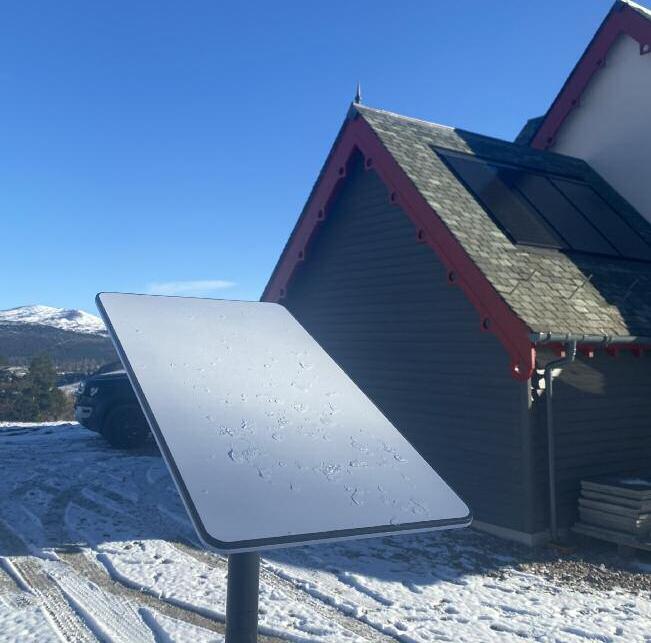

Three months after placing the order with BT we remain without service They’ve been attentive in communicating their difficulties, but the principle issue is finding an available connection in their cabinet Furthermore they’ve voiced concerns over the speed of connection they will be able to provide over an ageing copper network
Having suspected we might have issues with BT, we opted to spread our bets by installing both satellite and microwave alternatives
Elon Musk’s SpaceX enterprise offers a Starlink solution This is entirely self-installed and a couple of weeks after we placed the order, an exciting package arrived from California
The satellite receiver and router were installed and within the hour we were online with impressive performance in excess of 150Mbps However, we experienced some connectivity issues, which were probably a consequence of hardware and replacement equipment was provided

In light of the initial issues with Starlink we subscribed to an independent supplier to provide a line-of-sight radio wave solution This was an intriguing solution which involves a signal being broadcast from a radio tower atop the nearest hill which is then ‘bounced’ via a repeater station directly to our receiver which points to it The service guarantees symmetrical speeds i e upload and download at a minimum of 40Mbps
We are fortunate in receiving a 4G mobile signal
and consequently that would be a further possibility; though I think we have sufficient bases covered for the time being
In summary, the exercise has been intriguing in understanding the developing landscape in alternatives to a hard-wired connection to allow effective remote communications
galbraithgroup.com | Energy Matters | Summer 2023 | Pag e 23
07909 978643 calum innes@galbraithgroup com
Above: The microwave receiver (left) and the repeater station (arrowed)
Below: The Starlink receiver and it’s impressive performance
As energy bills soar, eco homes command premium prices

Energy efficient homes are selling at a premium as buyers seek to reduce their carbon footprint and save money on soaring energy bills
David Corrie reports
Galbraith has analysed its sales data for the past 12 months and reports that properties with a good energy performance rating and features such as solar panels, good insulation, or a ground-source heat pump command a higher price on average.
Of 175 houses currently for sale through Galbraith, the average asking price of those with the best energy efficiency rating (bands A-C) is £504,231 while those with the poorest energy efficiency (bands D and E) is £479,336 – a difference of 5 1 per cent
Of 1,115 houses sold by the firm in the past 12 months, the difference is even more striking, with 17 1 per cent more being paid for energy efficient homes (£594,005 on average) compared with those in the lower bands (£506,864)
Part of the reason for the margin is the work required to upgrade or modernise the least energy efficient homes, however the keen demand from buyers is also a factor which boosts the sale price of highly-rated and eco-homes
Energy efficiency has been the story of the year in 2022
more and more buyers are keen to cut their carbon footprint as well as reducing their energy bills
Our data suggests that energy-efficient properties do command a premium, which will be good news for home-owners who have invested in their property Energy efficiency is a topic which comes up early on in conversation Buyers are keen to see if they can cut their bills and live more sustainably Many are considering installing solar panels or a heat pump
One recent sale in Dumfries & Galloway, The Old

Hall at Bargrennan, was under offer within 10 days and attracted significant interest A major part of its appeal was its energy efficiency, with features including glazing designed to provide solar gain, a specialist woodburning stove which stores and releases heat gradually, and solar panels, for which the owners had a feed-in tariff agreement extending 18 years into the future Blair House, which was sold by Galbraith in the spring, is one of the most energy-efficient eco homes ever to come on the market in Perthshire The property benefits from a low carbon design with features such as natural fibre thermal insulation, triple glazing, and passive stack ventilation with heat recovery
Hot water is provided by solar thermal panels and clay plaster was used on the internal walls to regulate the temperature and humidity inside
Pag e 24 | Energy Matters | S u m m e r 2 02 3 | galbraithgroup.com
–
New faces in Morpeth, from left: William Blair, Alistair Cochrane, Simon Beeby, Jo Waddington, James McDonald, Gill Elliott, David Hurst
The house and the grounds were designed to encourage native plants, mosses and lichens, while the natural birch walls incorporated bird boxes and bat roosts The property attracted a considerable degree of interest and sold at a closing date
Many of the properties that come to the market are modern, bespoke eco houses, or houses significantly refurbished with efficiency in mind, however we are seeing more and more examples of energy efficient technology being installed and integrated into properties We expect this interest in energy efficient homes to continue in 2023 as a major factor of interest to buyers, and indeed for the next several years
Galbraith reports that its residential sales for this year are slightly down on the post-pandemic year 2021, the best year in the history of the firm, but
still higher than in 2020, at an average of £57 6m per quarter, showing the continued strong demand for rural property
The three areas of Scotland where sales continued to rise this year are Inverness-shire, Aberdeenshire and Moray, reflecting continued very high demand in the north of Scotland, despite an exceptionally active 2021 In the north of England sales have also continued to rise, marking the fourth successive year of growth Galbraith has 13 offices across Scotland and the north of England and two-thirds of its property sales are to buyers already registered with the firm
G albraith appoints seven new staff as Northumberland business grows
Galbraith has expanded its reach into Northumberland and the North-East of England, with seven new staff joining the rural business team based in a new office in Morpeth.
The new appointments enable Galbraith to move forward with the strategic development of its rural business in the North East, strengthen links with Scottish Borders teams, and offer a more integrated service to clients.
Galbraith has doubled its headcount since 2003 and is one of the last remaining UK property consultancies which is entirely independent.
Martin Cassels, CEO of Galbraith, said: “I am delighted to welcome the new rural team to Galbraith as we continue to grow. Their combined expertise and experience will prove of
Blair House in Glen Doll, is one of the most energy-efficient eco homes ever to come on the market in Perthshire

great value to our clients in the North East of England We couldn’t wish for a better start to the year ”
David Hurst, who joins as a Senior Associate and head of the Morpeth office, specialising in agricultural consultancy and land management, added: “This is an exciting new opportunity to join Galbraith and build on the firm’s excellent reputation in Northumberland. I look forward to working with the team to deliver an outstanding service to clients.”

Headquartered in Edinburgh, Galbraith is the leading rural consultancy in Scotland and the North of England, managing farm, forestry and woodland, land and estate interests on more than 3.5 million acres.

galbraithgroup.com | Energy Matters | Summer 2023 | Pag e 25
david corrie@galbraithgroup com 07824 690199
Solar solutions for difficult areas
Generating electricity from the sun cuts costs and benefits the environment, but what if you ’ re restricted by land and buildings?
Cameron Main reports
With the recent surge in energy costs impacting almost every farm and rural business across the UK, it’s logical that using a renewable energy solution could help ease this pressure
In a rural context, south-facing pasture or agricultural/commercial rooftops remain the ideal sites for solar panel installation, and if the UK Government’s recent proposals to increase the proportion of agricultural land eligible for solar panel installation come to fruition, this will only become clearer

For those without access to vast unrestricted rooftop space, choosing between installing solar panels either on finite agricultural land, in upland locations or in areas of challenging terrain, has put the benefits of
generating electricity using solar panels largely out of reach
However, there are solutions for those with the financial capability and motivation but without the availability or freedom to use any traditional installation locations
The BBC’s ‘Future Planet’ highlighted an example from the Netherlands, using floating solar panels to track the sun throughout the day for maximum energy production all year round A similar system is employed in the Swiss Alps on a highland lake surrounded by snow covered-mountains
The floating solar panel market is expected to grow by 43% year on year over the next decade, representing an opportunity for those with water-based assets in the UK, particularly Highland lochs in Scotland These are innovative ways to ride the investment wave underpinning solar technology and reap long-term benefits
Bee Solar Technology manufactures ground-mounted solar tracking systems and distributes them globally The Gloucestershire start-up says its dual-

axis, relocatable equipment generates up to 45% higher output than equivalent static systems for larger commercial and agricultural applications as well as homes Other UK companies, such as EvoEnergy and 3ti are developing relatively affordable carpark-based solar systems with inbuilt electric vehicle car charging ports With the right investment, these could be used nationwide, in both rural and urban areas
While Scotland currently contributes only 2 5% to UK solar production, innovative solutions have the potential to enable solar electricity generation in inaccessible or remote areas of the country
However, it’s important to assess the impact that new systems may have upon the surrounding area, such as the increased shade on any habitats or biological matter underneath the panel, before installation is undertaken
Our energy team at Galbraith is highly experienced in helping clients think outside the box and using their assets in the most efficient and environmentally conscious manner If you’re concerned about the cost of energy inputs for your rural business, our energy team would be delighted to help you to develop your green ass
Pa g e 26 | Energy Matters | Summer 2023 | g a l b ra i t h g ro u p co m
cameron main@galbraithgroup com 07342 093477
rENEWaBLE ENErgY SuBSIdIES
Grants and loans for domestic improvements
The Domestic and Non-Domestic renewable Heat Incentives are closed to new applicants as of March 31, 2022 If you are already on the scheme, you will receive payments as usual as long as you continue to meet your ongoing obligations
The Government is still providing financial support to help with the rollout of low-carbon heat technologies
Scotland
Home Energy Scotland Grant and Loan: This is designed to make homes warmer and more comfortable by helping homeowners install a range of energy saving measures, through grants and/or an interest-free loan funded by the Scottish Government
You can now apply for grant funding Grant for energy efficiency improvements is up to 75% of the combined cost of the improvements, up to the maximum grant amount of £7,500 A rural uplift (up to £9,000) is also available to provide extra support to rural and island homes which can face increased costs to install home improvements
In respect of how much a household can borrow, it depends on what improvement or installation is required
These are grouped into two types –
energy efficiency improvements and renewables systems
For energy efficiency improvements the maximum grant and optional loan available for each improvement is as follows:
• Solid wall insulation: up to £10,000 (£7,500 grant plus £2,500 optional loan)
• Electric heating: up to £5,500 loan (£2,500 grant available for high heat retention storage heaters when installed as part of a package of measures)
• Glazing: up to £8,000 (no grant available)
• Insulated doors: up to £4,500 (no grant available)

• Flat roof or room-in-roof insulation: up to £4,000 (£3,000 grant plus £1,000 optional loan)
• Loft, floor or cavity wall insulation: up to £2,000 (£1,500 grant plus £500 optional loan)
For renewable systems the maximum loan/grant amounts are as follows:
• Heat pumps (either air source to water, ground source to water, water source to water, or hybrid air source to water): £15,000 (£7,500 grant plus £7,500 optional loan, or £9,000 grant plus £7,500 optional loan if the household qualifies for the rural uplift)
• Solar Photovoltaic (PV) panels: £6,000 (£1,250 grant available if taken as a package of measures)
• Solar water heating systems: £5,000 (loan only, no grant available)
• Hybrid solar PV/water heating systems: £5,000 (loan only, no grant available)
• Energy storage systems (heat or electric batteries): £6,000 (£6,000 loan, £1,250 grant available if taken as a package of measures)

• Wind or hydro turbines: £2,500 (loan only, no grant available)

• Biomass boilers or stoves (nonautomated, non-pellet stoves or room heaters are not eligible): £15,000 (£7,500 grant potentially available upon evidence that a heat pump is unsuitable for the property (£9,000 if the household qualifies for the rural uplift))
• Connections to a renewably powered heat network scheme: £7,500 (loan only, no grant available)
The grant and loan values stated above are subject to availability while funds last or until the end of the financial year –whichever is sooner Funds will be allocated on a first-come, first-served basis Funding is reserved for householders when they receive a written loan offer, not on application to the scheme
If you would like to find out if you are eligible and how you apply for the grant and loan funding please follow the link below
Source: www homeenergyscotland org/ find-funding-grants-and-loans/interestfree-loans/overview/
England
The Boiler Upgrade Scheme: The Boiler Upgrade Scheme (BUS) is a UK Government initiative to encourage more people in England and Wales to install low carbon heating systems
The BUS covers three low carbon heating systems:
• Air-source heat pump: £5,000 off cost and installation

• Biomass boiler: £5,000 off cost and installation for properties in rural location and properties not connected to the gas grid
• Ground-source heat pump: £6,000 off cost and installation
Source: energysavingtrust org uk/grantsand-loans/boiler-upgrade-scheme/
galbraithgroup.com | Energy Matters | Summer 2023 | Pag e 27 Follow u s o n Twitter : @ Galbraith_Group @Galbraith_ENRGY Like u s o n Facebook : f acebook.com/GalbraithPr o p ertyConsultancy Se e u s o n Inst a g ram: w w w.instagram.com/GalbraithGroup J o i n u s o n LinkedIn: w ww.linkedin.com/company/galbraith
ENErgY TEaM combines years of unrivalled skill in all property aspects of energy, utility and infrastructure. On the move and from our 13 offices across Scotland and the North of England, we bring wide experience of renewable energy technologies and associated services. We’re you, no matter what the circumstances.

Our EXpErTS
Battery Storage
Mike reid, richard Higgins, rachel russell, Philippa Orr
Biomass
Mike reid
Buying, Selling & due diligence
Calum Innes, Mike reid
Carbon Capture & Investment
Heather Coyle, Eleanor Harris, Athole McKillop
Compensation Claims
richard Higgins, Mike reid, rachel russell
Compulsory purchase
Schemes (all infrastructure)
richard Higgins, Mike reid
feasibility Studies (renewables)
John Pullen
gIS & Mapping
Strath Slater, Brogan Cutter
hydro power
Dougal Lindsay, John Pullen
Infrastructure, utilities & Wayleaves
Mike reid, Philippa Orr, rachel russell
Investment (infrastructure & renewables)
Calum Innes, Crawford Mackay, Mike reid
Land referencing
Philippa Orr, rachel russell
Minerals
Peter Combe
planning
Calum Innes
project Management (renewables)
John Pullen
On-shore Wind
Harry Lukas, Crawford Mackay, Mike reid, Hugo remnant
Off-shore Wind
richard Higgins
Solar
Mike reid, richard Higgins, rachel russell, Philippa Orr
Telecoms
Mike reid
rating
Calum Innes
Valuation
richard Higgins, Calum Innes, Mike reid
athole mckillop@galbraithgroup com
07718 523045
brogan.cutter@galbraithgroup.com 07500 794928
calum.innes@galbraithgroup.com
07909 978643
crawford.mackay@galbraithgroup.com
07909 978641
dougal.lindsay@galbraithgroup.com
07899 997915
eleanor harris@galbraithgroup com 07585 900870
harry lukas@galbraithgroup com 07721 754822
heather coyle@galbraithgroup com 07825 382084
hugo remnant@galbraithgroup com 07718 523051
john pullen@galbraithgroup com 07557 163140
Galbraith offices Regional agents
mike reid@galbraithgroup com 07909 978642
peter.combe@galbraithgroup.com 07718 523034
philippa.orr@galbraithgroup.com 07917 220779
rachel.russell@galbraithgroup.com 07884 657219
richard.higgins@galbraithgroup.com 07717 581741
strath slater@galbraithgroup com 07917 327738
gaLBraITh’S
CONTaCT uS











































































